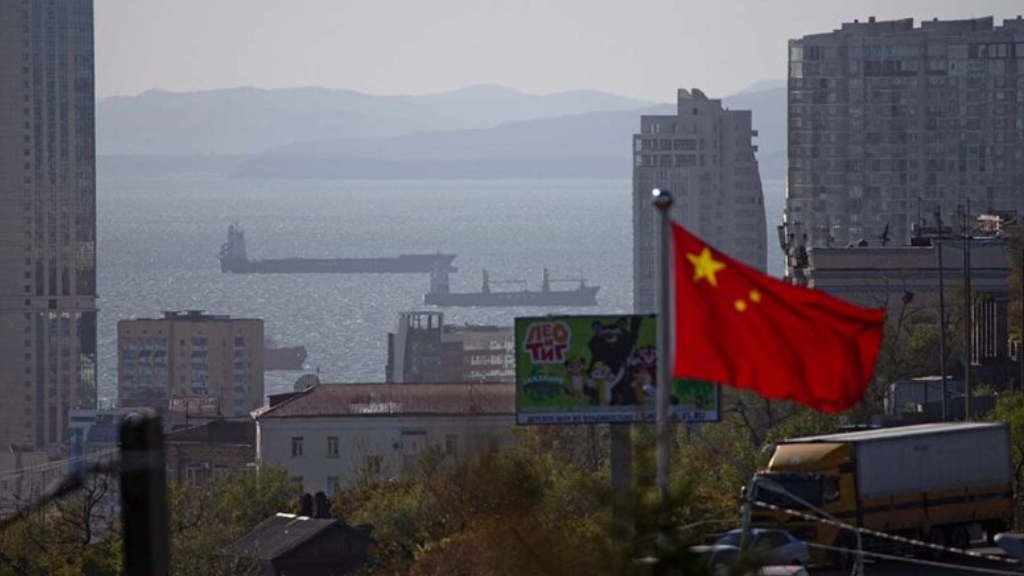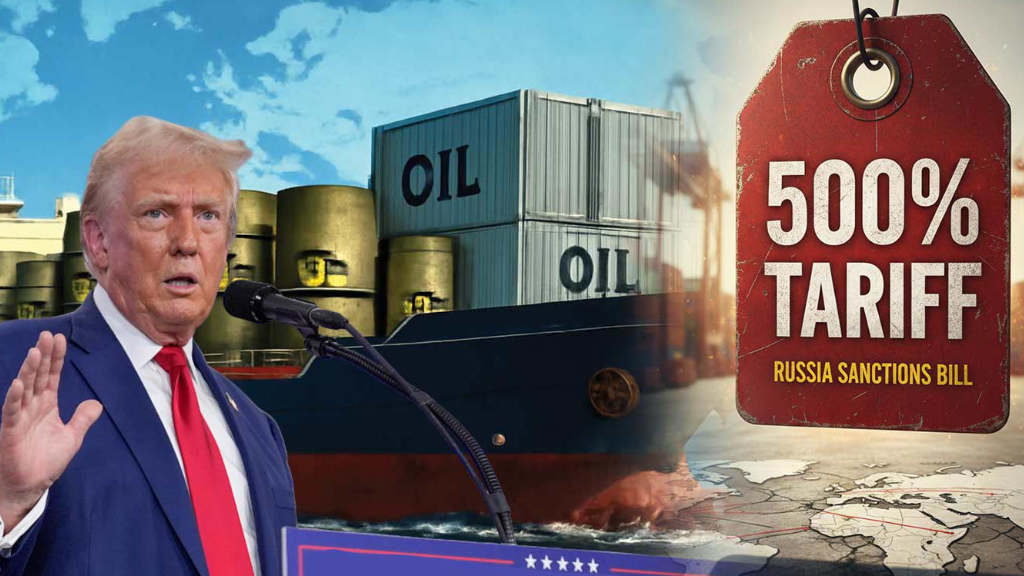Bilateral trade between China and Russia continues to decline, with Russian exports of hydrocarbons decreasing both in physical and monetary terms, according to the latest data from the General Administration of Customs of the People’s Republic of China.
In the first five months of this year, the volume of trade between Russia and China decreased by 8.2% year-on-year, to US$88.8 billion. Exports from China to Russia decreased by 6.6%, to US$38.9 billion, while shipments from Russia to China decreased by 9.5%, to US$49.9 billion. This decline is also being seen on a monthly basis. At the end of May this year, bilateral trade for the month was US$17.7 billion, a small decline of 0.6% less than in April.
Mutual trade between the two countries has been declining since the beginning of this year. According to the Q1 results, trade turnover had decreased 6.6% compared with Q4 2024. Chinese supplies to Russia decreased by 6.3%, while Russian exports to China fell by 6.7%.
With these current trade dynamics, it will be difficult this year for the two countries to repeat the records of previous years. To compare, by the end of 2023, Sino-Russian trade increased by 26.3%, to US$240.11 billion. Last year, China and Russia updated this record, achieving US$244.8 billion in mutual trade.
Traditionally, Russian exports to China are based on hydrocarbons: oil, natural gas and coal. Russia also supplies metals, timber, seafood, agricultural products and other goods to China. China exports to Russia a wider range of products, from cars, tractors, computers and smartphones, as well as industrial and specialized equipment to children’s toys, clothing and shoes. However, Russia is also gradually losing interest in Chinese cars and electronics, with recent tariff regulations especially in the auto sector aimed at countering the huge volumes of imported Chinese cars amidst a drive to boost Russia’s domestic auto industry.
Since the beginning of 2025, China has also reduced purchases of Russian oil, coal and liquefied natural gas. Between January-April 2025, China reduced oil imports from Russia by 14.2% compared to the same period in 2024. The volume of Russian supplies of oil to China amounted to 32.4 million tonnes. Meanwhile, Chinese importers paid almost US$17.1 billion for oil from Russia from January to April 2025 – 23.9% less than in the same period last year. However, despite the reduction, Russia remains the largest supplier of oil to China. The PRC is also going through an energy transition with more green energy supplies entering the China domestic market, such as wind farms and solar power.
China has also reduced purchases of liquefied natural gas (LNG) from Russia. In January-April 2025, Russian LNG supplies decreased by 27.2%. According to China Customs, imports decreased by 28% in value. However, this is offset by the volume of Russian pipeline gas supplies to China in January-April 2025 – they increased by 31.6% year-on-year and reached US$3.3 billion.
Coal imports to China fell by 18% year-on-year in May. In general, for the first five months of this year, its imports amounted to 188.7 million tonnes, 8% less than a year earlier. Coal supplies to China are reportedly falling for the third month in a row. One of the explanations for the decline is the growth of its own coal production. In the first four months of this year, China’s domestic coal production reached 1.58 billion tonnes, an increase of 7%.
Mitigating Economics

Economists explain the reduction in mutual trade between China and Russia as being for several reasons. Sergey Margulis, a senior lecturer at the Presidential Academy says that “One of them is the impact of secondary sanctions. The problem with a number of transactions has still not been fully resolved: some Chinese banks are avoiding working with Russian counterparties. Payments often take a very long time or do not go through at all. Unfortunately, the problem with payment and secondary sanctions has not yet been resolved.”
Vitaly Mankevich, Chairman of the Russian-Asian Union of Industrialists and Entrepreneurs (RASP), attributes the decline in Russian-Chinese trade to sharp fluctuations in the ruble exchange rate, as well as a decrease in Russian energy supplies to China. In addition, he believes, the data on Russian-Chinese trade in dollar does not accurately reflect the overall situation, as the Russian ruble has strengthened against the US dollar since the beginning of the year. “Russia and China do not trade in US dollars with each other, and instead are using national currencies. Therefore, the calculation of the trade turnover of Russia and China in US dollar terms does not reflect the real picture.”
Mankevich says that with the help of China, Moscow will be able to compensate for the loss of the European gas market and set records for natural gas exports to China. In May, Russian President Vladimir Putin and Chinese President Xi Jinping instructed their respective SOEs to speed up work on the construction of the Power of Siberia-2 gas pipeline.
Dmitry Scriabin, portfolio manager at Alfa Capital, agrees, saying that “One of the reasons for the decline in exports to China is the decline in oil prices in January-May of this year. Because of this, the dollar-denominated value of Russian oil in the first five months of 2025 decreased by 16% compared to the same period of the previous year.”
He also attributes the drop in imports from China to the difficulty in mutual settlements after the introduction of large-scale sanctions on the Russian financial sector last autumn.
Stolypin Anton Sviridenko, the executive director of the Institute of Growth Economics says that the trade structure between the two countries has reached a plateau, beyond which it cannot grow unless cooperation, including investment, is deepened. He believes that Russia will not be able to dramatically increase exports of resources, food, and metals to China at this time. “The green agenda in China is also doing its job, meaning the demand for oil and petroleum products may decrease during certain periods.”
Olga Belenkaya, head of the macroeconomic analysis department at Finam, says that China is the largest importer of raw materials in the world, but now China’s demand for raw materials has slowed down. She said that “This had an impact on the reduction of Chinese imports in January-May, both in real terms and especially in value, due to lower commodity prices. In US dollar terms, imports of crude oil to China fell by 11.4% in five months, natural gas by 16.6%, coal by 29.5%, and grain by 30.9%. This could have resulted in a reduction in the value of imports from Russia by 9.5% over the specified period. For Russian exporters, the situation is aggravated by the sharp strengthening of the ruble since the beginning of the year and the dependence on Chinese exports, which has increased significantly since 2021, now accounting for more than 30% of the total volume.”
Belenkaya attributes the decline of Chinese exports to Russia, as influenced by a reduction in import demand in the Russian economy, especially for Chinese cars, stating that “According to our calculations, in January-April 2025, 1.9 times fewer passenger cars were delivered to Russia than in the same period of 2024, and 4.9 times fewer trucks. This is due to the high key interest rate in Russia, a sharp increase in recycling for foreign cars since last autumn, and a reduction in Russian construction activity, which affected the demand for trucks. The demand for imported electronics has also decreased. Imported goods that were purchased at the end of last year with a weak ruble exchange rate are selling poorly, and there has been overstocking, especially in relation to cars.”
Oleg Abelev, head of the analytical department at Rikom-Trust says that although sanctions have an impact, the risk of falling under secondary sanctions make calculations and logistics difficult. He says that “China wants to diversify suppliers and is increasing purchases of liquefied natural gas from Qatar, Australia, and the United States. It buys oil from the Persian Gulf countries. Demand in the Chinese economy is also declining. There are logistical restrictions, and sanctions are constantly being imposed against the Russian tanker fleet and cargo insurance, which dramatically complicates transportation.” He believes that in the short term, the bilateral trade turnover between Russia and China will remain under pressure, but in the longer term, non-primary exports from Russia will increase.
Opinion

The overall decline in Russia-China trade is not purely about sanctions (although Western media will suggest it is exclusively responsible) as several other factors have also resulted in a loss of bilateral trade volumes. Of these, the most notable has been the strength of the Russian ruble, which has made its exports less attractive. It has gained in value by 30% this year.
A secondary issue to this is that as energy prices are typically measured in US dollar terms, but with Russia and China trading mainly in Rubles and RMB, some of the energy trade data in terms of signalling a US dollar decline may in fact be somewhat exaggerated.
China has also requested that some of its Russian oil supplies are shipped via third countries – such as Kazakhstan – effectively reducing the amount of oil it imports from Russia – while in reality maintaining volumes.
Another factor is ironically, the ‘Made in Russia’ campaign, which is a state policy to increase the percentage of Russian production on the Russian market – and for developing Russia’s export industry over time. This policy has been underlined by Russia deliberately altering its trade terms in specific areas, such as imposing higher import taxes on Chinese-manufactured autos, which has made them less competitive in the market against Russian domestically produced vehicles. This policy doesn’t just extend to automobiles; it is also in place across a number of other industrial sectors, including agriculture. Imports are being discouraged to allow the Russian domestic manufacturing sector to further develop.
Shocks to the global trade system, especially in the energy sector, also impact trade volumes and values. Just a week after the European Union announced a price cap of US$45 per barrel on Russian oil imports, Israel and Iran have engaged in conflict, raising the global price of oil and rendering any EU attempts to suppress prices largely ineffective.
Russia’s geographical trade make-up is also diversifying. Russia trades rather more now with ASEAN, the Middle East, Central Asia and even Africa and Latin America than ever before, with China trade declines effectively nullified via increases of trade volumes within the Eurasian Economic Union, Commonwealth of Independent States, and BRICS.
For example, the German Economic Institute stated on Friday (June 13) that Russia hadan 18% increase in its exports to its top 20 trade partners in 2024, with estimates that “this growth translates to US$330 billion dollars worth of trade.”
In short, trade volumes will always be somewhat difficult to assess and to sometimes maintain during periods of economic stress – exactly what is happening now. Declines in Russia-China trade should not be taken entirely at face value in terms of economic reality, and certainly not in terms of Russia’s overall global trade dynamics.
Further Reading
Gazprom Boosts Power of Siberia Gas Supplies to China by 35%





